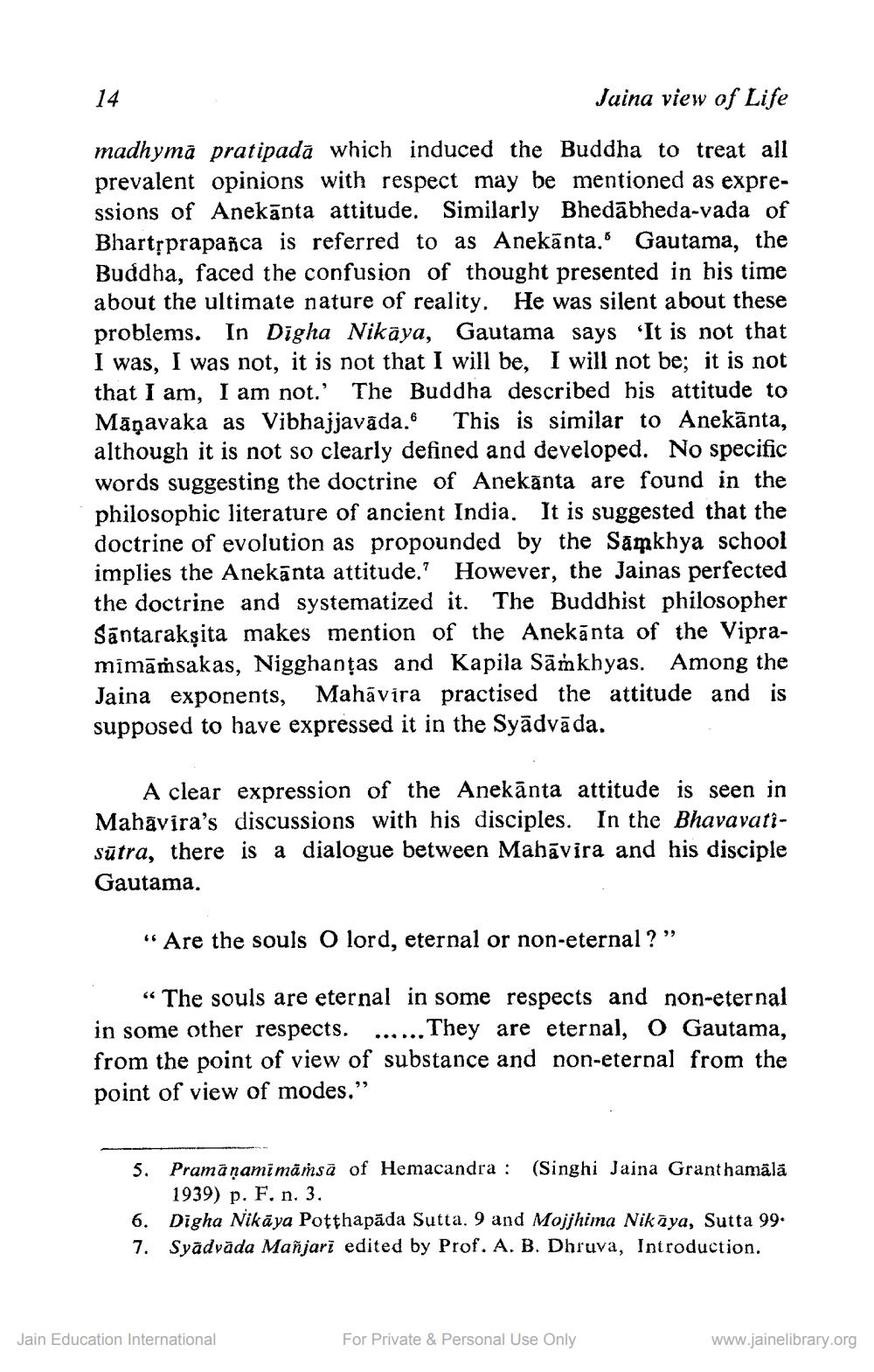________________
14
Jaina view of Life
madhymā pratipadā which induced the Buddha to treat all prevalent opinions with respect may be mentioned as expressions of Anekānta attitude. Similarly Bhedābheda-vada of Bhartsprapanca is referred to as Anekānta. Gautama, the Buddha, faced the confusion of thought presented in his time about the ultimate nature of reality. He was silent about these problems. In Digha Nikaya, Gautama says 'It is not that I was, I was not, it is not that I will be, I will not be; it is not that I am, I am not.' The Buddha described his attitude to Māṇavaka as Vibhajjavāda. This is similar to Anekānta, although it is not so clearly defined and developed. No specific words suggesting the doctrine of Anekānta are found in the philosophic literature of ancient India. It is suggested that the doctrine of evolution as propounded by the Samkhya school implies the Anekānta attitude.? However, the Jainas perfected the doctrine and systematized it. The Buddhist philosopher Santarakṣita makes mention of the Anekānta of the Vipramīmāṁsakas, Nigghanțas and Kapila Sāṁkhyas. Among the Jaina exponents, Mahavira practised the attitude and is supposed to have expressed it in the Syādvā da.
A clear expression of the Anekānta attitude is seen in Mahavira's discussions with his disciples. In the BhavavatiSūtra, there is a dialogue between Mahāvira and his disciple Gautama.
" Are the souls o lord, eternal or non-eternal ? ”
“ The souls are eternal in some respects and non-eternal in some other respects. ...... They are eternal, O Gautama, from the point of view of substance and non-eternal from the point of view of modes.”
5. Pramānamimamsă of Hemacandra: (Singhi Jaina Granthamālā
1939) p. F. n. 3. 6. Digha Nikāya Potthapāda Sutta. 9 and Mojjhima Nikaya, Sutta 99. 7. Syädvāda Mañjari edited by Prof. A. B. Dhruva, Introduction.
Jain Education International
For Private & Personal Use Only
www.jainelibrary.org




